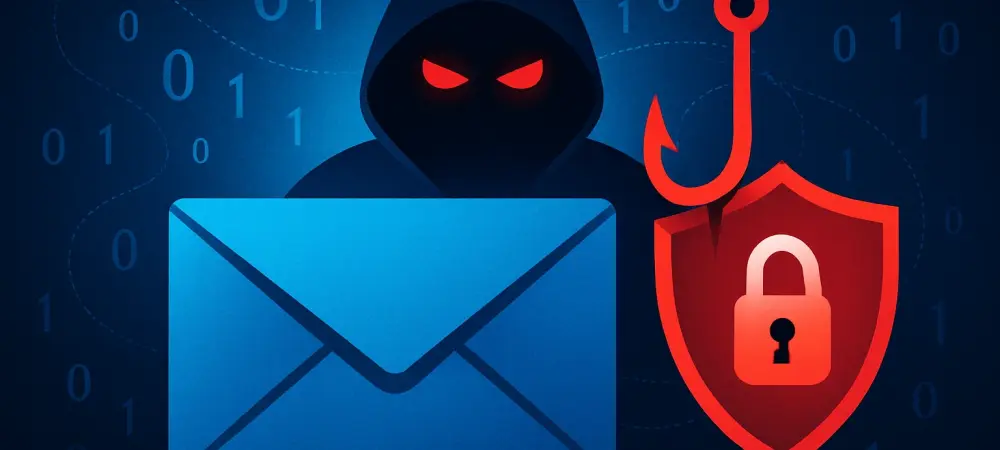In an era where digital communication underpins global business, a staggering statistic reveals the vulnerability of email systems: over 90% of cyberattacks begin with a malicious email, underscoring a growing challenge as cybercriminals, including state-sponsored actors, exploit sophisticated methods to breach organizational defenses. Email security gateways (ESGs), designed as the first line of defense against such threats, are increasingly under scrutiny as attackers target specific flaws to gain unauthorized access. This analysis delves into a critical trend of escalating email security vulnerabilities, spotlighting a recent incident involving Libraesva’s ESG and broader implications for cybersecurity.
Unveiling a Critical Flaw in Libraesva ESG
Technical Breakdown and Risk Assessment
A recently identified vulnerability in Libraesva’s Email Security Gateway, tracked as CVE-2025-59689, exposes a command injection flaw with a CVSS score of 6.1, indicating medium severity. This flaw arises when malicious emails containing specially crafted compressed attachments bypass proper sanitization during processing. Attackers can exploit this gap in certain archive formats to execute arbitrary commands as non-privileged users, creating a pathway for potential system compromise.
The vulnerability affects versions ranging from 4.5 to 5.5.x prior to 5.5.7, with patches available in updated releases such as 5.0.31, 5.1.20, 5.2.31, 5.3.16, 5.4.8, and 5.5.7. However, systems running versions below 5.0 remain unsupported, leaving users at risk unless they manually upgrade to a supported release. This situation highlights a critical need for organizations to stay current with software versions to avoid exposure to known threats.
Real-World Exploitation by Advanced Actors
Reports confirm that this vulnerability has already been exploited in a targeted attack by a state-sponsored threat actor, believed to be linked to a foreign hostile entity. The precision of this incident, as noted by Libraesva, demonstrates the sophisticated nature of such attacks, where even medium-severity flaws can pose substantial risks. The ability of attackers to craft specific exploits for email attachments reveals a dangerous trend in cyber warfare tactics.
Despite the severity being rated as moderate, the impact of this exploitation underscores how advanced adversaries can weaponize seemingly manageable vulnerabilities. The affected systems faced immediate risks of unauthorized access or data manipulation, amplifying concerns for organizations relying on ESGs. Libraesva’s swift response, developing a fix within 17 hours of detecting the attack, serves as a benchmark for vendor accountability in crisis situations.
Expert Perspectives on Escalating Cyber Threats
Cybersecurity specialists have raised alarms about the increasing complexity of state-sponsored cyber operations targeting widely deployed tools like email security gateways. These experts point out that adversaries often focus on niche vulnerabilities that may not appear critical at first glance but can yield significant access when exploited. Such tactics reflect a shift toward precision over volume in modern cyberattacks.
There is a strong consensus among professionals that timely software updates remain a cornerstone of defense against these evolving threats. Delaying patches or ignoring unsupported versions can leave organizations vulnerable to highly coordinated attacks. Experts advocate for automated update mechanisms and regular security audits to close gaps before they are exploited by malicious entities.
Further insights reveal that medium-severity vulnerabilities, like the one in Libraesva’s ESG, can have disproportionate consequences when leveraged by skilled threat actors. This reality necessitates a cultural shift in how organizations perceive and prioritize seemingly minor flaws. Vigilance, coupled with proactive threat intelligence sharing, emerges as a vital strategy to counter these sophisticated dangers.
Evolving Landscape of Email Security Solutions
Looking ahead, the email security domain is likely to see intensified efforts in enhancing sanitization processes for incoming content, particularly attachments and compressed files. Robust mechanisms to detect and neutralize malicious payloads before they reach end users will become a priority. This trend points toward greater integration of artificial intelligence to preemptively identify potential exploits.
Challenges persist, especially in ensuring user compliance with updates, as many organizations struggle with legacy systems or unsupported software versions. The gap between vendor-released patches and user implementation often creates windows of opportunity for attackers. Addressing this issue may require innovative solutions like mandatory update policies or cloud-based security models that reduce dependency on manual intervention.
On a broader scale, the rise of state-sponsored cyber threats calls for stronger collaboration across industries and governments to safeguard critical infrastructure. Email security is no longer just a technical concern but a matter of national security, as hostile entities target communication channels to disrupt operations. Building resilient systems will demand shared resources, standardized protocols, and a collective commitment to staying ahead of adversarial tactics.
Key Insights and Future Considerations
Reflecting on this trend, the exploitation of Libraesva’s ESG vulnerability by a state actor has underscored the persistent and evolving nature of email-based cyber threats. The rapid response from the vendor has set a positive precedent, yet the incident revealed how even medium-severity flaws can be weaponized with precision. It has become evident that organizations need to act swiftly to secure their systems against such targeted attacks.
Moving forward, the focus shifts to actionable steps, such as prioritizing immediate updates to patched versions and investing in proactive security training for staff. Exploring partnerships with cybersecurity firms to enhance threat detection capabilities has emerged as a practical solution. As cyber warfare continues to evolve, staying adaptable and informed has proven essential for organizations aiming to protect their digital frontiers from future threats.

